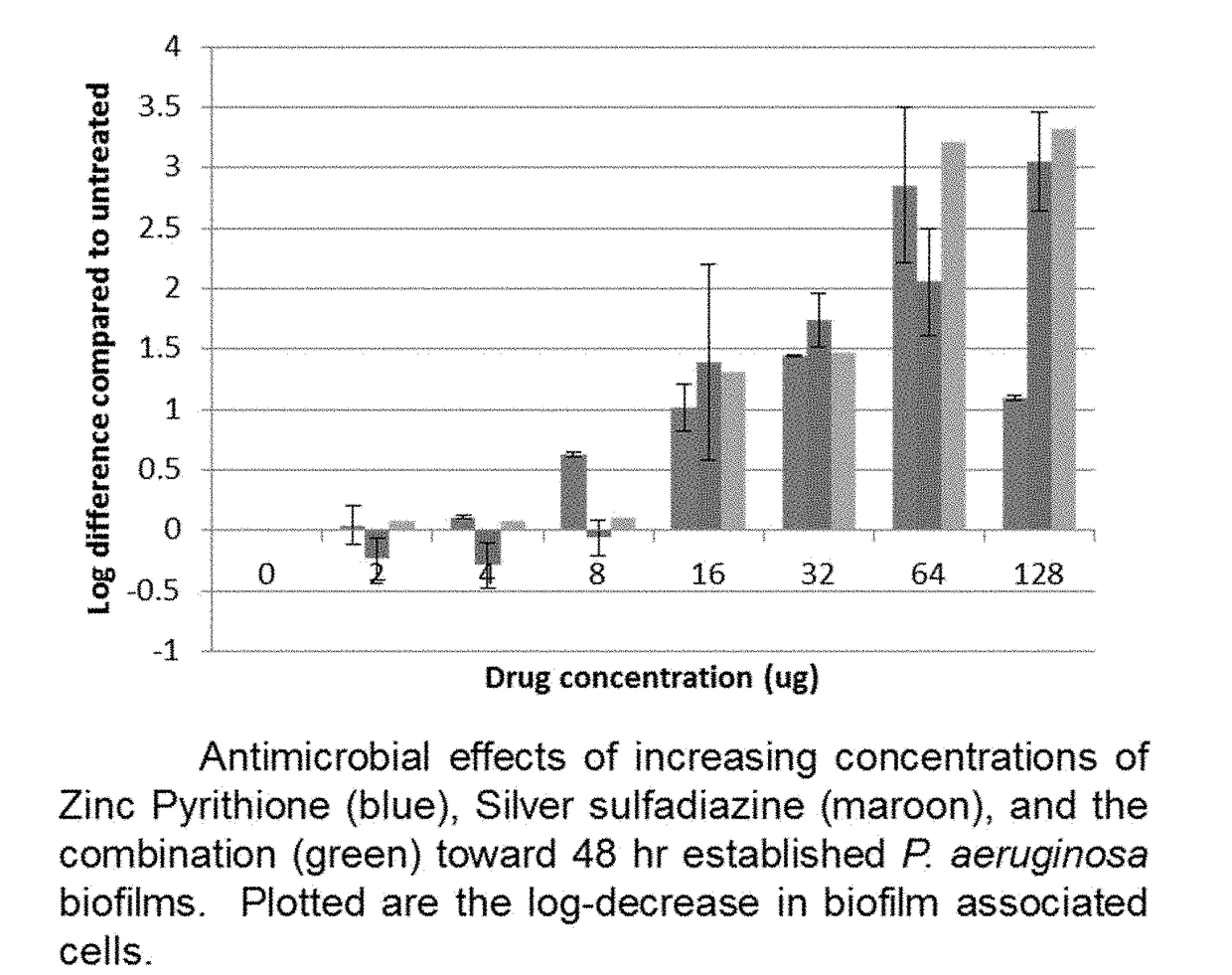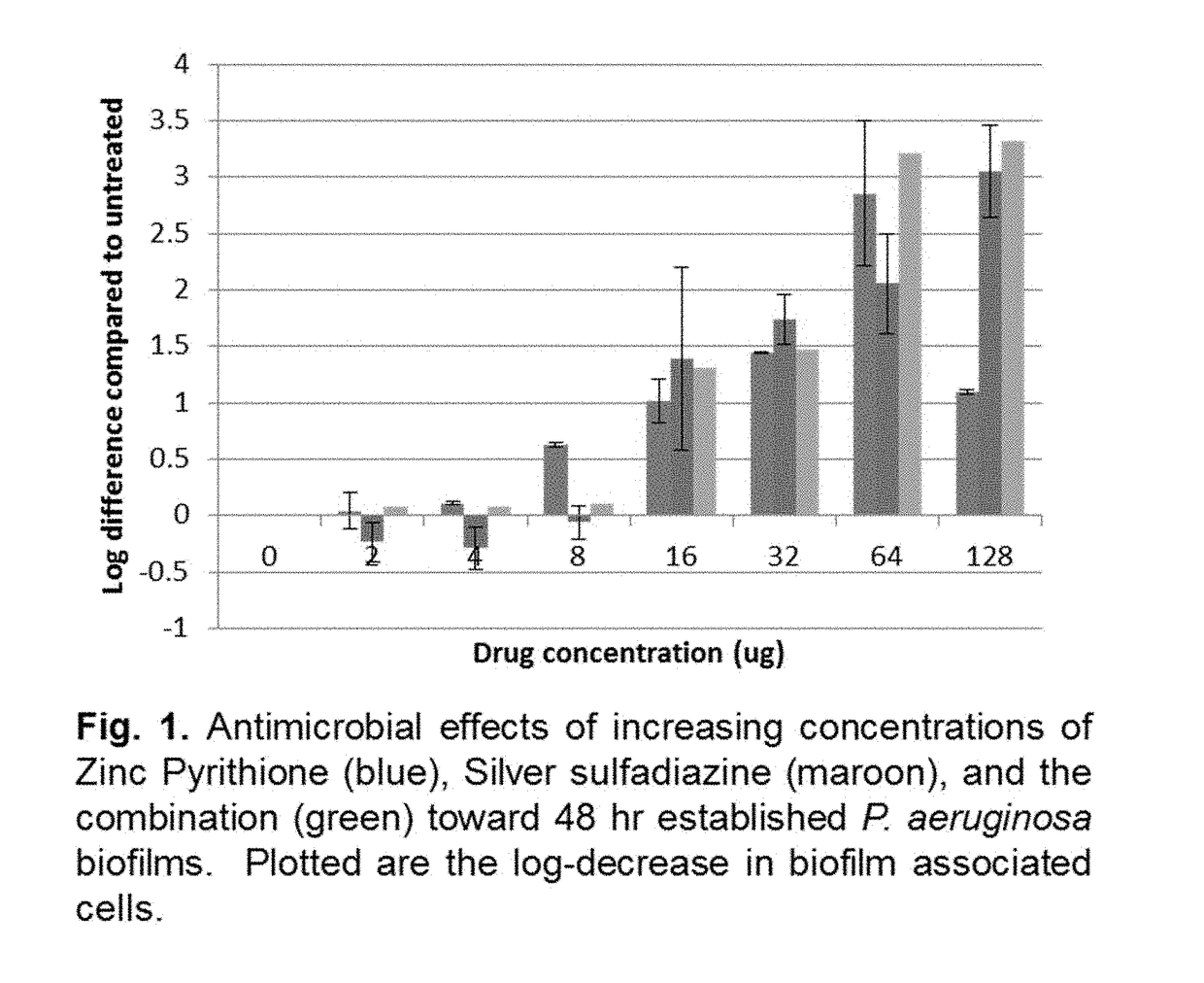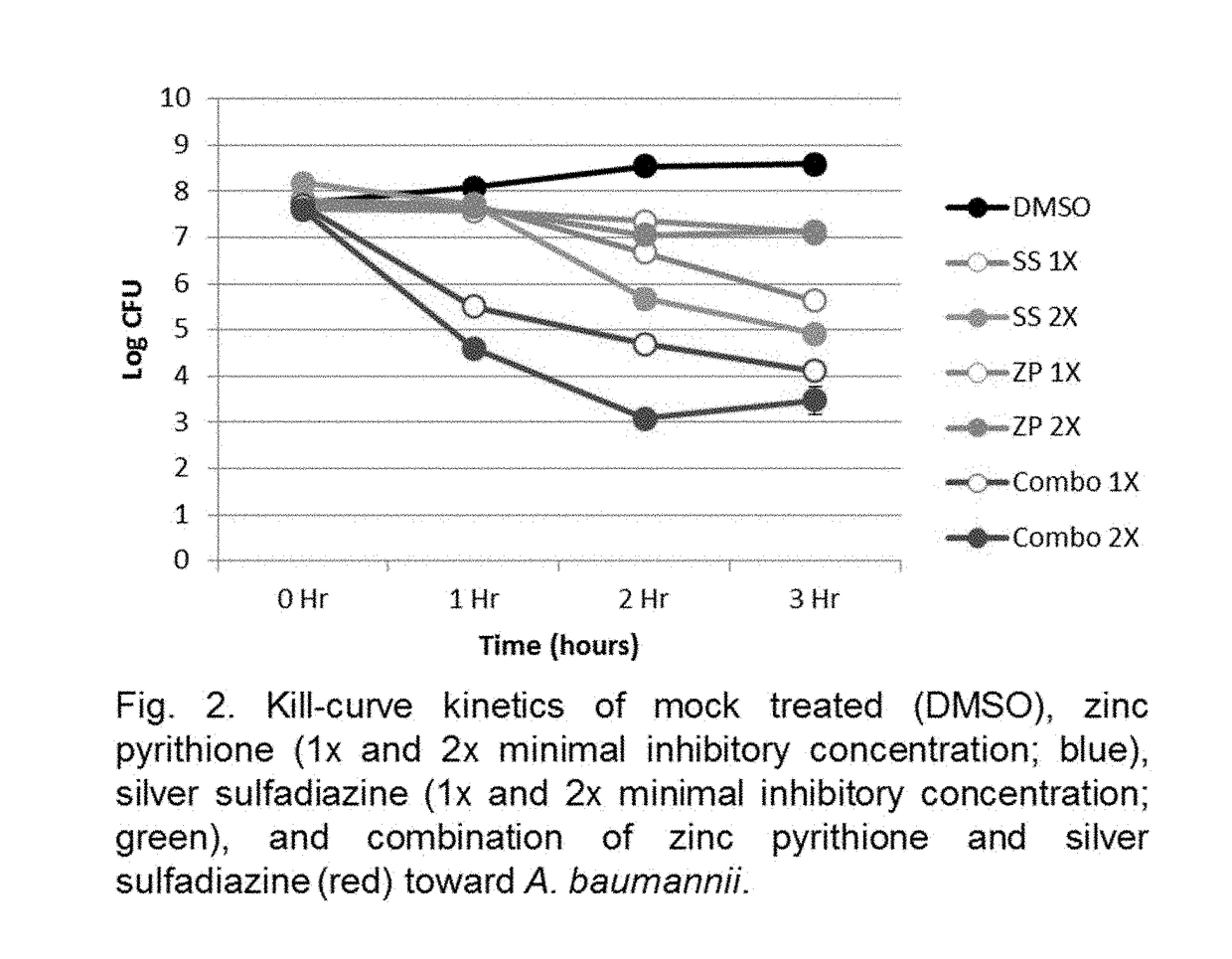Prevention and treatment for microbial infections
a technology for microbial infections and treatment, applied in the direction of biocide, antibacterial agents, drug compositions, etc., can solve the problems of poor efficacy of silver sulfadiazine, need to vigorously treat infection conditions, replace devices, etc., to achieve the effect of improving antimicrobial efficacy and effective in inhibiting, reducing or treating microbial infections
- Summary
- Abstract
- Description
- Claims
- Application Information
AI Technical Summary
Benefits of technology
Problems solved by technology
Method used
Image
Examples
example 1
Zinc Pyrithione Exhibits Antimicrobial Activity Toward Established P. Aeruginosa Biofilm-Associated Cells
[0063]Members of the Selleck compound library were screened (50 μM) for agents that displayed bactericidal activity toward 48 hour P. aeruginosa biofilms using the adenylate kinase assay, as previously described (Jacobs et al., Antimicrob Agents Chemother, 57 (1): 26-36 (2013)). Results of that campaign identified that the antimicrobial agent, zinc pyrithione (ZnPt), was among the best performer. Dose response testing confirmed that 50 μM (15.8 μg ml−1) treatment resulted in a 1-log reduction in biofilm associated Pseudomonas aeruginosa (FIG. 1). Further, at low concentrations (4 to 64 μg ml−1) the agent's antibiofilm activity toward P. aeruginosa, was comparable to that of silver sulfadiazine, which is commonly used for the therapeutic intervention of wound site infections.
example 2
Zinc Pyrithione Displays Broad Spectrum Antimicrobial Activity
[0064]As a means to further characterize the agent's antimicrobial activity its efficacy toward other members of the ESKAPE pathogens were evaluated and compared to sulfadiazine (Table 1; below). Standard minimum inhibitory concentration testing revealed that ZnPt displayed greater antimicrobial activity toward
BacterialZnPt MICAg SulfadiazineSpeciesStrain(ug / ml)MIC (ug / ml)Escherichia coli8307116StaphylococcusUAMS-1216KlebsiellaCKP4216Acinetobacter98370924PseudomonasPA01168Enterococcus824-0528EnterococcusV58328EnterobacterClinical Isolate416 / 32
Escherichia coli (1 μg ml−1) and the ESKAPE pathogens Enterococcus faecium (2 μg ml−1), Staphylococcus aureus (2 μg ml−1), Klebsiella pneumoniae (2 μg ml−1), Acinetobacter baumannii (2 μg ml−1), and Enterbacter cloacae (4 μg ml−1), in comparison to silver sulfadiazine. Conversely, ZnPt exhibited reduced activity toward planktonic P. aeruginosa (16 μg ml−1). Taken together, we conside...
example 3
Zinc Pyrithione and Silver Sulfadiazine Combination Display Improved Activity Toward A. baumannii and S. aureus Biofilms
[0066]Despite their additive effects toward planktonic P. aeruginosa, combinations of ZnPt+Silver sulfadiazine had no significant benefit or antagonistic effects toward the organism when in the biofilm state, in comparison to either agent alone (FIG. 1.). Conversely, combination treatment was more effective than either agent (alone) at reducing biofilm-associated A. baumannii and S. aureus (representative results for A. baumannii are shown in FIG. 3). More specifically while ZnPt displayed improved activity toward A. baumannii biofilms in comparison to silver sulfadiazine alone, combination treatment with both agents exhibited the greatest antibiofilm activity, resulting in a 4-log reduction in bacteria at combination concentrations ≥16 μg ml−1. This is perhaps best exemplified at the highest concentration tested (128 μg ml−1); both agents individually resulted in ...
PUM
| Property | Measurement | Unit |
|---|---|---|
| concentrations | aaaaa | aaaaa |
| concentrations | aaaaa | aaaaa |
| concentration | aaaaa | aaaaa |
Abstract
Description
Claims
Application Information
 Login to View More
Login to View More - R&D
- Intellectual Property
- Life Sciences
- Materials
- Tech Scout
- Unparalleled Data Quality
- Higher Quality Content
- 60% Fewer Hallucinations
Browse by: Latest US Patents, China's latest patents, Technical Efficacy Thesaurus, Application Domain, Technology Topic, Popular Technical Reports.
© 2025 PatSnap. All rights reserved.Legal|Privacy policy|Modern Slavery Act Transparency Statement|Sitemap|About US| Contact US: help@patsnap.com



